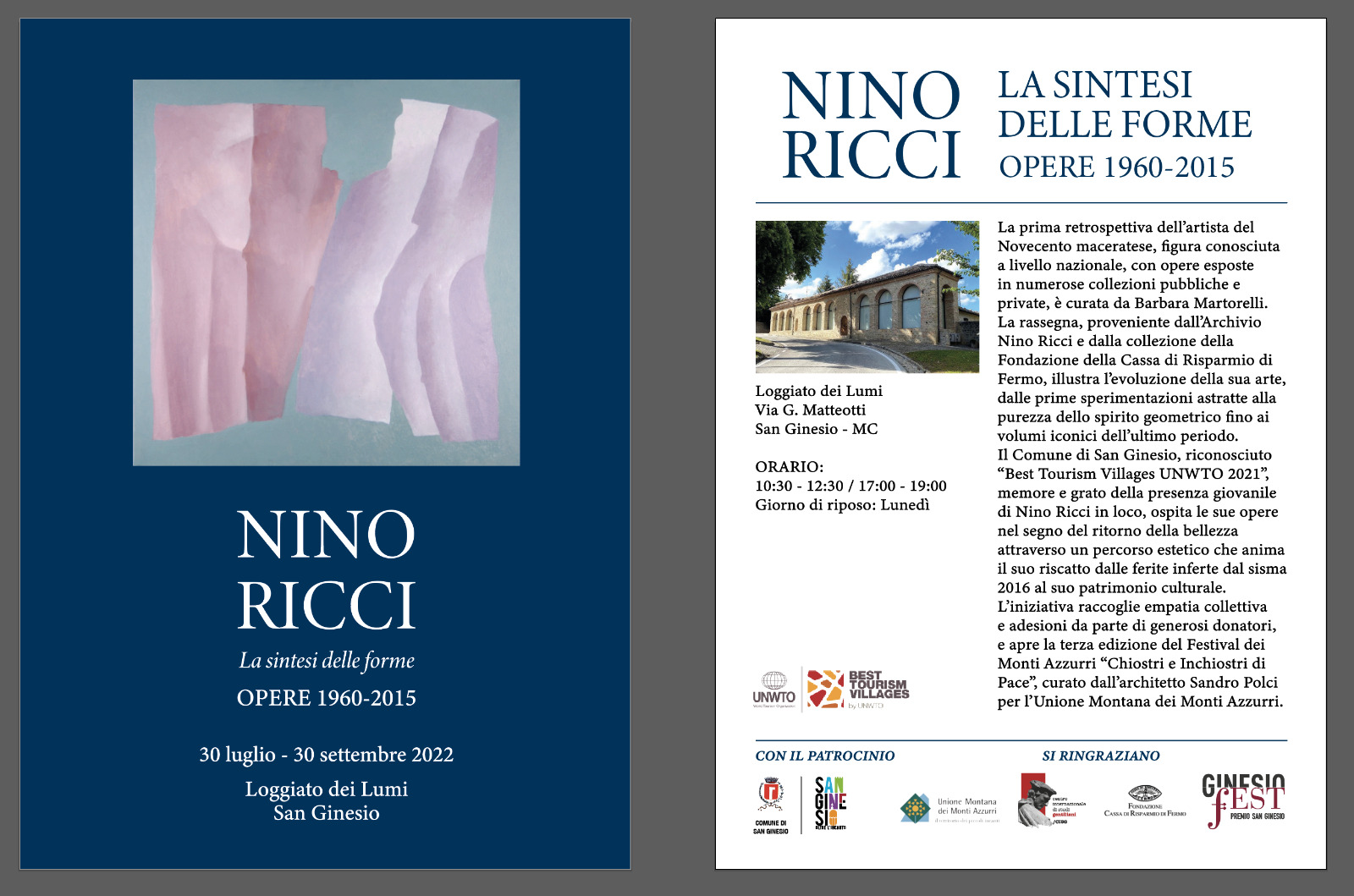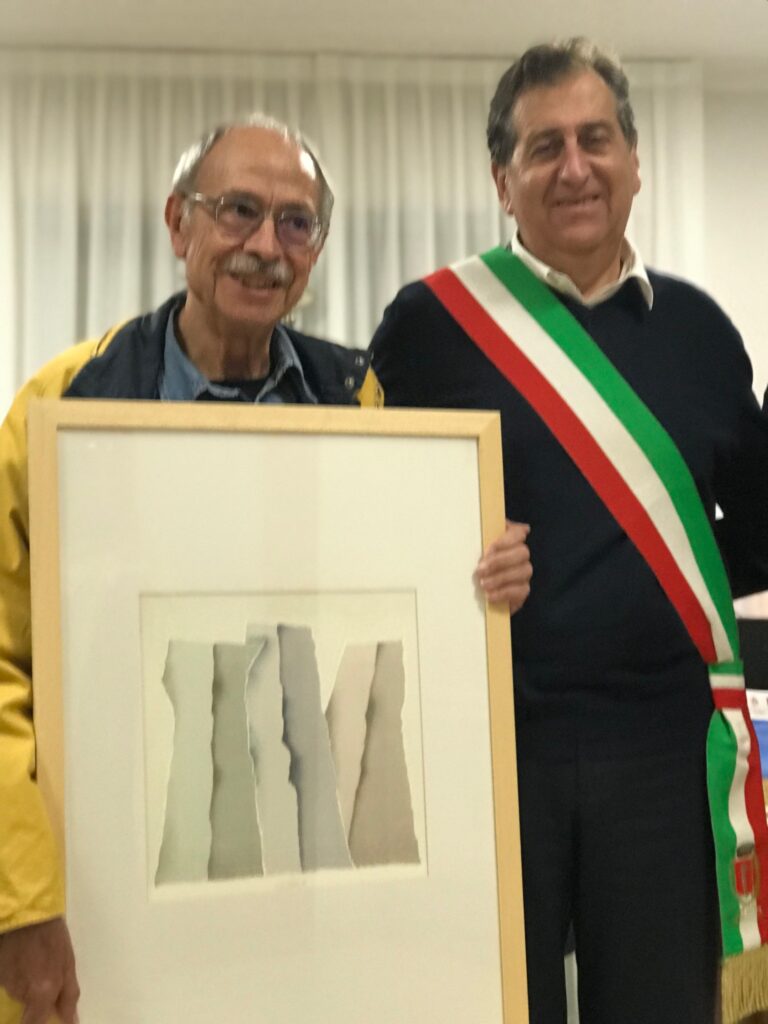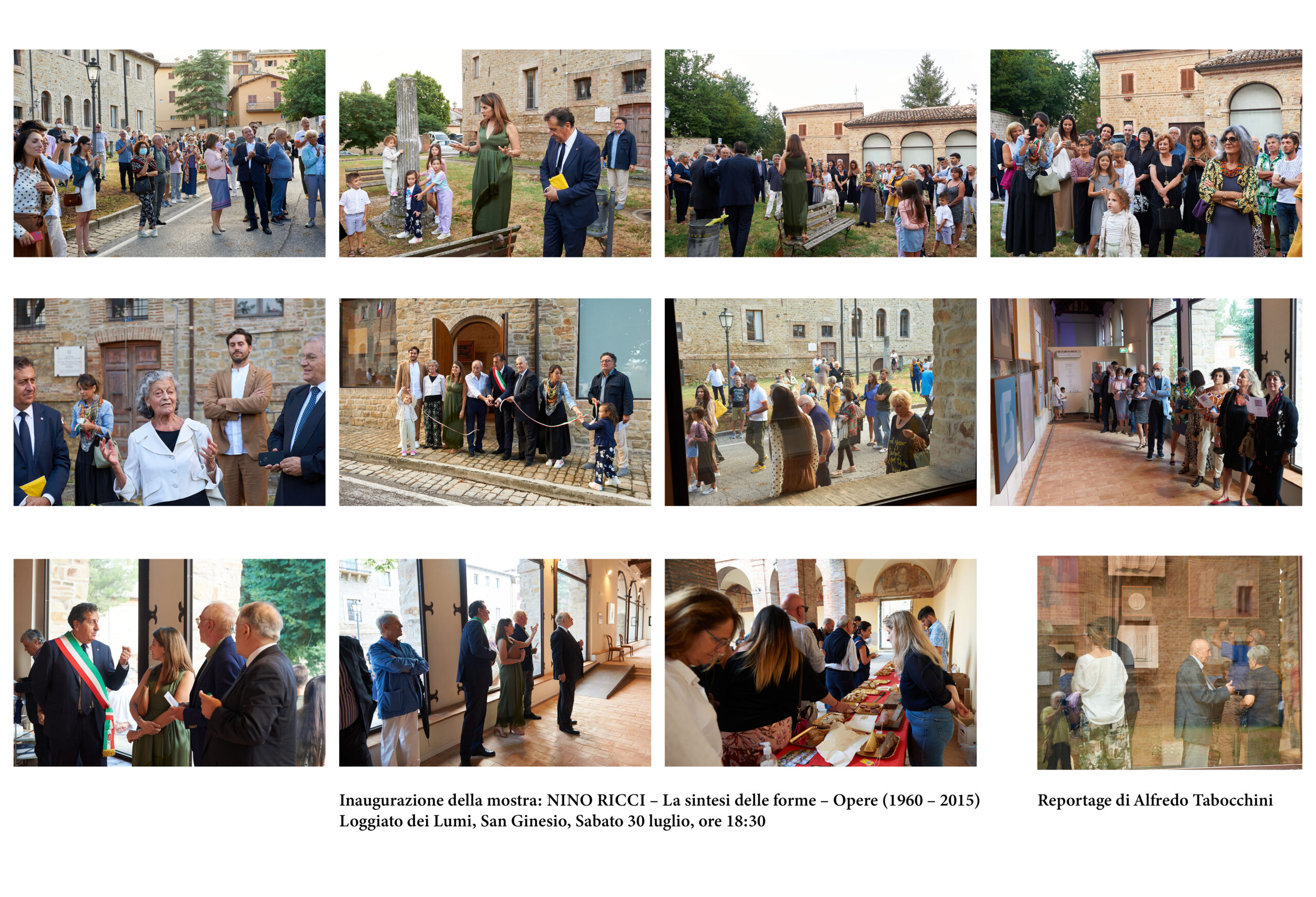Nevertheless, in the ambulatory of the Loggiato dei Lumi the decades lived in art seem to unwind, as if they were a visual timeline where each work seems to find its place naturally and the synthesis of forms seems to reveal an organic evolution.
The glance in front of Nino's work as a whole speaks of the harmony of the color palettes, of formal research, of continuous tension towards a rational equilibrium, all combined with the wise use of techniques, and the materials designed to support them.
Coming out of the formal expressions and researches of the 1950s, the artist's brush is reduced to pure pictorial technique, where it is the color itself that builds the architecture of the work. Ricci's paintings do not tell, but remain available to the viewer.
The 1950s were important for his formation. Urged by the father, Nino Ricci attended the Scuola del Libro of Urbino which in those years was undoubtedly the most important institution in Italy for editorial graphics, illustration and engraving. The teachings received will then accompany him constantly throughout his artistic activity.
Subsequently his training and the search for his sign continue first at the Academy of Fine Arts in Rome in the scenography section, where he had his fellow countryman Sante Monachesi as a teacher; then as a scholarship holder at the Centro Sperimentale di Cinematografia in Rome.
Upon returning from Rome, In the 1954, meets Osvaldo Licini on the occasion of the National Exhibition of Abstract Art organized in collaboration with the Friends of Art Brigade. Another fundamental meeting was the one with Jean Fautrier at the XXX Venice Biennale, thanks to which, in the 60s, Ricci decided to join the Levante Group.
With Pacifiers, Ferraioli, You fish, Tulli e Nerpiti then participated in the important monographic exhibition at Palazzo Strozzi in Florence 1963, organized by Galleria Numero directed by Fiamma Vigo.
The 1960s brought about a measured search for order, aimed at a geometric abstraction with a scenographic setting where the aesthetic investigation, through a process of reduction and decomposition of reality, is immediately aimed at seeking the balance between the two-dimensionality of the forms and the tension in the lines (n.981,982,990),.
Forms are brought onto the canvas, lines and colors deliberately reduced to the essentials and arranged according to a geometric scheme that is totally free from allegorical meanings. It is possible to trace the investigation conducted by the artist on form and content in the paintings. The mathematically perfect precision of the works of these years hides at first sight, actually, a universe of small deliberate alterations, because the canvas wants to be a graphic representation of an emotion, of a feeling.
From the 1970s onwards, the artist approaches a new geometric formalism where volume and its solid three-dimensionality become pure essence. The format of the canvases, now square and upside down, according to the lesson of Max Bill and Richard Paul Lhose, welcomes bolder and pop tones and palettes that present very different shapes and geometries from previous works (244,289).
The artist almost obsessively experiments with all the possible variations and different iterations around the same module, so as to be able to calibrate new balances each time through the different chromatic solutions and the dialogues between the continuous intersections.
For most of the 70s and most of the 80s, geometric formalism accompanies all of Nino Ricci's work. In 1984 ends with teaching to devote himself entirely to artistic activity, and travel in the company of his beloved wife Stefania.
Particularly, a trip to Prague in the summer of 1986 it marked an important turning point in his artistic career. Indeed, the vision of the tombstones of the city's Jewish cemetery turns out to be an epiphany for the artist, inspiring him a new series of works that will soon become iconic in the production of the following years.
From that moment on, a new humanism envelops his works. The lines chase a new softness and plasticity. The volumes no longer respond to the classic geometric and mathematical canons, but they rise to a new ethereal and timeless dimension, losing weight and static.
To use the words of Giuseppe Appella: “The ruins – the totemic object interpreted and expressed between the 1989 and the 2002 – they dilate beyond their own phenomenon. They outgrow their still life appearance, they are arranged according to the frequency of symmetry and alignment, attendance and direction, almost always horizontal, undertaken with sudden vertical surges and an amount of energy equal to the cadenced address, to the development of the movement between plane and counter-plane.”
The Natures or Volumes populate the artist's canvases for over twenty years. Their composition is the result of meticulous studies on the impact of light and, so, of the shadows on the surfaces of the cuts that the artist studies through preparatory maquettes, also featured in the exhibition.
In the same years, in watercolors, crayons, carboncini, graphites and in the engraving the same research on the volume is applied which, thanks to a sophisticated hatching, intensifies and brings the play of light and shadow back into the print.
To interest the artist, in addition to the meticulous study of the technique, it is also the refined knowledge of the use of paper in artistic techniques, for which in 1992 he found himself writing a treatise together with Luigi Teodosi entitled: In Fabriano's Charts, with an introduction by Vanni Schewiller.




